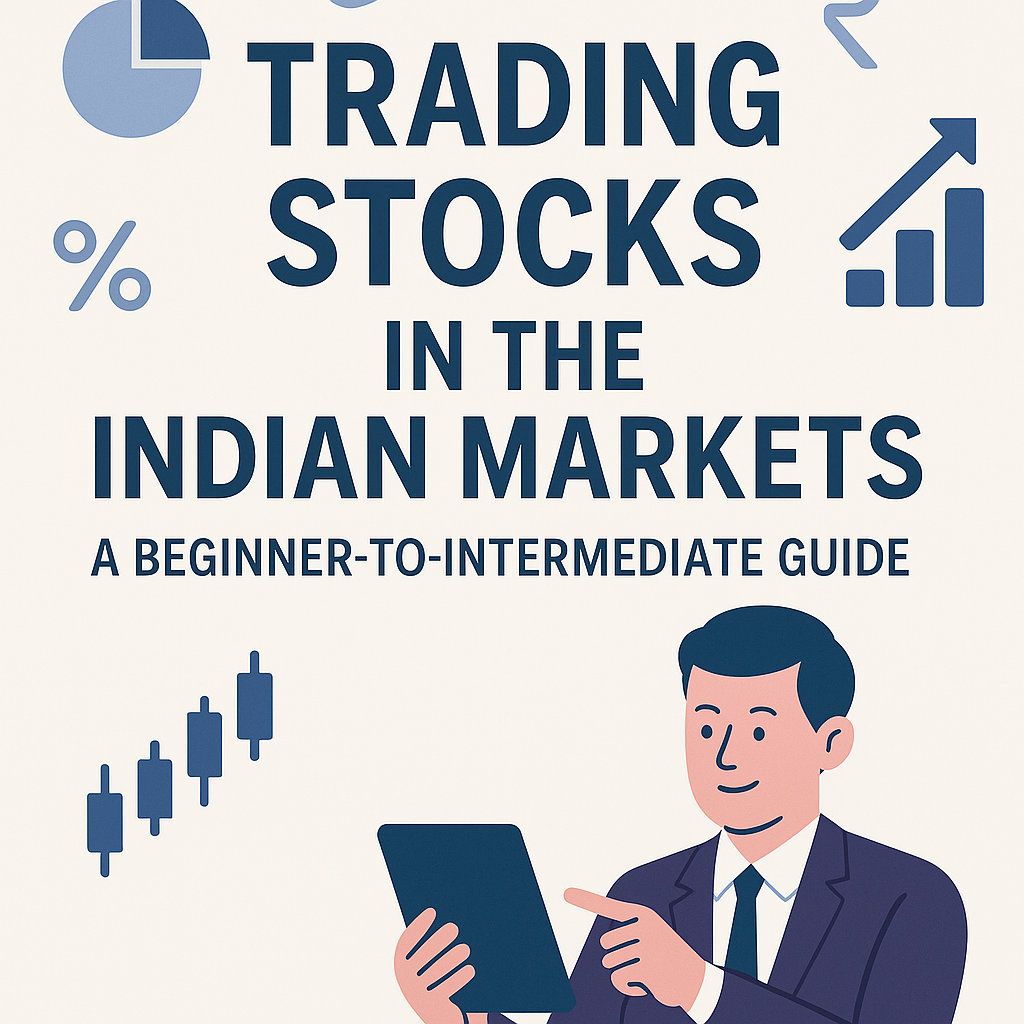What Are Stocks? (India Edition)
Just like in any other country, stocks in India represent a portion of ownership in a listed company. When you buy shares of Reliance Industries (RELIANCE) or Infosys (INFY), you’re buying a claim to a small piece of that business — its earnings (via dividends), its growth, and in some cases, a say in major decisions (if you’re a large shareholder).
In India, companies issue stock primarily through IPOs (Initial Public Offerings) to raise capital. After that, these stocks trade on public exchanges like:
- NSE (National Stock Exchange)
- BSE (Bombay Stock Exchange)
These are centralized markets regulated by SEBI (Securities and Exchange Board of India).
Important point: When you buy stocks, you’re buying them from other investors, not directly from the company.
Why Trading Stocks in India Is a Different Ball Game
- Limited Leverage: No wild 1:100 leverage here. Most brokers offer 1:2 for delivery (CNC orders) and 1:5 intraday (MIS orders). This helps filter out reckless trading.
- Short-selling Rules: You can short-sell stocks intraday, but if you want to short for longer, you’ll need to use F&O (Futures & Options) instruments.
- Market Timings: The Indian stock market operates from 9:15 AM to 3:30 PM IST — no after-hours trading like in the US (although pre-open from 9:00–9:15 exists).
How Do We Trade Stocks in India?
Broker and Platform Setup
Discount brokers like Zerodha, Upstox, and Angel One dominate the Indian market.
- Platforms: Zerodha’s Kite and Upstox’s Pro Web are user-friendly and cost-effective.
Full-service brokers (e.g., ICICI Direct, HDFC Securities) offer research but charge higher fees.
Order Types
- Limit Orders
- Market Orders
- Stop Loss (SL) Orders
- SL-M Orders (Market with Stop Loss)
No Buy Stop Limit orders per se, but bracket and cover orders can help you manage entry/exit dynamically.
Position Sizing Example in Indian Context
Let’s say Tata Motors is trading at ₹600, and you set your stop loss at ₹580. You want to risk ₹1,000 on this trade.
- Risk per share: ₹20
- Shares you can buy: ₹1,000 / ₹20 = 50 shares
- Total position size: 50 shares × ₹600 = ₹30,000
For delivery, you’ll need ₹30,000 in your account, or less if trading intraday with margin.
What Stocks Do We Trade in India?
There are 5,000+ listed companies on BSE, and about 1,600 actively traded stocks on NSE. That’s a lot! You’ll need a stock screener to filter the noise.
Best Free Stock Screeners for Indian Stocks:
- Screener.in — Great for fundamentals.
- TradingView — Excellent for technical analysis (offers NSE/BSE data with Pro plan).
- Chartink — Perfect for real-time technical scans.
- Tickertape — Balanced screener with news integration.
Key Stock Metrics in Indian Context
Here are the essential metrics and how they apply to Indian stocks:
| Metric | Description (India-specific examples) |
|---|---|
| Stock Price | Determines affordability. Penny stocks are usually those < ₹10. Be cautious. |
| Market Cap | Large caps: >₹20,000 Cr (Reliance, TCS), Mid caps: ₹5,000–20,000 Cr, Small caps: <₹5,000 Cr |
| Volume | Liquidity is key. Avoid stocks with average daily volume below ₹5–10 lakh in turnover. |
| EPS (Earnings Per Share) | Earnings / Number of Shares. Check on Screener.in or company filings. |
| P/E Ratio | Price / EPS. Compare to sector average (e.g., IT typically has higher P/E than PSU banks). |
| PEG Ratio | P/E divided by earnings growth. Harder to find in Indian screeners but can be calculated manually. |
| Dividend Yield | Tells you how much cash return you’re getting. Often better in PSUs (like Coal India) than private players. |
How to Approach It
- Scan using Chartink or TradingView for technical setups — flags, breakouts, consolidations.
- Cross-check fundamentals on Screener.in: PEG < 1, consistent EPS growth, manageable debt.
- Choose high-volume, NSE-listed stocks to ensure liquidity.
- Enter trades during market hours — ideally, in the first hour or last hour of the session for better price action reliability.
Final Thoughts
Trading stocks in the Indian market isn’t easier or harder than Forex/Futures — it’s just different. It’s better suited for traders who enjoy more structure, less leverage, and a healthy mix of technical and fundamental analysis. If you’re like me and you’ve started to appreciate the calm yet powerful waves of swing trading over the chaos of day trading, the Indian stock market might be your next favorite thing.


